ASIAN YELLOW RAIL (COTURNICOPS EXQUISITUS).
Breeds in Eastern USSR and NE China. Winters in Southern Japan and SE China.
During AWD surveys, reported from just two sites in China. Presumably race but further studies needed for status determination, put ficularly over its breeding range.
ASIATIC DOWITCHER (LIMNODROMUS SEMIPALMATUS).
Breeds in Northern Asia. Winters and passage migrant in Eastern India, China, Malaya, Burma, Java, Indonesia, Sumatra. Frequents coastal mud-flats. Recent surveys in SE Asia put the total popularion between 15,000 and 20,000 birds (Asian
 |
 |
 |
BAER’S POCHARD (AYTHYA BARRI).
East Asia— China, Thailand, Kampuchea. Populations small but widespread, with
most wintering sites holding barely a few hundred birds. No serious dmu but requires monitoring.
BAIKAL TEAL (ANAS FORMOSA).
Breeds in Central Asia. Wintersin Japan, China, Korea and some proximate regions. Wintering numbers considerably reduced in Japan and China during the past few
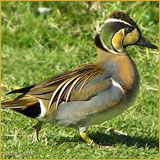 |
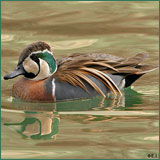 |
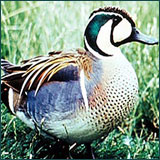 |
BENGAL FLORICAN (HOUBAROPSIS BENGALMSIS).
India. Swampy grassland and floodplam wetlands. Populations small and scattered due to habitat fragmentation. Mars, Kaziranga, Dudhwa are the main areas Total world population estimated to be in the vicinity of 400 birds, according to Ravi Sankaran, BNHS
 |
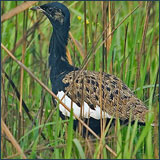 |
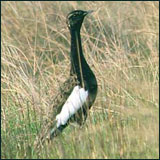 |
BLACK STORK (CICONIA NIGRAR).
Africa, Eurasia and parts of southern Asia. In the Indian region, a winter visitor. Uncommon. Population needs to be monitored.
BLACK-BREASTED PARROTBILL (PARADOXORNIS FLAVIROSTRIS).
INDIA. Wet grasslands in the Brahmaimura floodplains. Habitat change major threat and close monitoring is essential.
GREEN TURTLE (CHDONTA NRYDA).
In the Indian region, reported from shallow seas off the Gujarat coast, Gulf of Mannar, Lakshadweep and the Andaman, and Nicobar islands. An estimated 200 females annually nest in the Indian region. Nesting on mainland India reported only from the Gujarat coast (Daniel J.C., 1983). Barely a dozen major nesting sites (where 2000 and more females have been recorded to breed) survive in the species’ known range.
HAWKSBILL TURTLE (EMMOCHELYSIMBRICARA).
Tropical and sub-tropical seas of the Pacific, Atlantic and Indian oceans. Most widespread in the Indian Ocean, nesting on islands. Uncommon on and around the mainland India coast. Possibly breeds on offshore islands in the Gulf of Kutch and Gulf of Mannar. Quite common on the Lakshadweep and Andaman and Nicobar islands. The `tortoise-shell’ of commerce is obtained from this
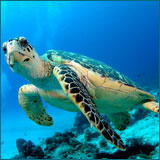 |
 |
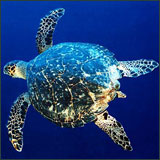 |
LEATHER BACK TURTLE (DERMHELYSCORIACCA).
Beaches of the tropical seas in the Atlantic, Indian and Pacific Oceans. Some decades ago, this species was considered on the verge of extinction. The 1971 world population was estimated at around 29,000 breeding females, with a high of 40,000 to allow for
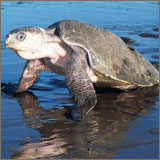 |
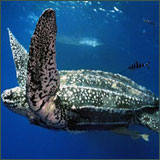 |
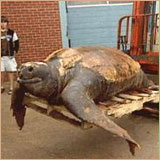 |